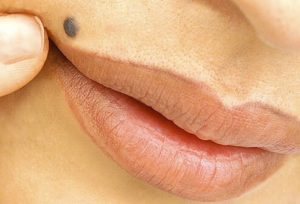
Good 8-year survival outcomes seen in patients 85 and up
by Contributing Writer, MedPage Today
ORLANDO – Older patients seemed to see survival benefits from Mohs micrographic surgery (MMS) as treatment for non-melanoma skin cancer, researchers reported here.
In a retrospective review of patients with a mean age of 87.5 who underwent MMS, the average patient lived to about 93.7 years of age, according to Emma Rogers, a second-year medical student at Robert Wood Johnson Medical School in Piscataway, N.J., and colleagues.
However, comorbidities did make a difference in patient outcomes. The 8-year survival among patients who had a 0-1 score on the Adult Comorbidity Evaluation-27 (ACE-27) score was 40% versus an 8-year survival of 15% for patients with an ACE-27 score of 2-3, they reported in a poster at the American Academy of Dermatology annual meeting.
“You can’t just withhold treatment based on a patient’s age,” Rogers told MedPage Today. “Age alone is not appropriate to determine if someone is eligible for surgery. Obviously, there are many factors that should determine whether a patients is suitable for surgery, but this study shows that age by itself should not be a cut off.”
She added that there is controversy over the treatment of non-melanoma skin cancers in the very elderly, as these cancers are rarely fatal. But “without treatment, they can grow larger, bleed, and become symptomatic. Mohs micrographic surgery is performed for non-melanoma skin cancers of the head and neck, and for tumors of high risk of recurrence,” she explained.
Rogers acknowledged that the study results are limited by the lack of a control group, either elderly patients who did not undergo any treatment or those who were treated with other methods.
Her group reviewed records of 10,103 patients who underwent MMS at Memorial Sloan-Kettering Cancer Center in New York City from July 1999 to the end of 2014. They identified 373 patients (190 men and 183 women) who were ≥85 at the time of surgery.
MMS was completed in two stages in 43.6% of the patients, and involved simple wound management in the majority of them. Remaining patients required either three or more surgeries. The mean size of the lesions was 0.9 cm in length and 0.8 cm in width.
Basal cell carcinomas accounted for 54.7% of the lesions; squamous cell carcinoma was identified in 44%; and 1.3% were other malignancies.
Nearly three-fourths of the patients had hypertension (74.8%) and almost half took aspirin (48.2%), while 17% had some form of joint replacement. Also, 9% were on pacemakers and 11% had a valve or stent implant.
According to the Charlson Comorbidity Index (CCI), 81% had 0-1 total comorbidities. “The additive ACE-27 score is clustered around a total of 2-3 and CCI scores were similarly weighted toward the lower end of the age-adjusted scale at 5,” the authors explained.
Those with a lower comorbidity grade (63%) reached 5-year survival versus those (50%) with a higher comorbidity grade. Also, survival at 10 years was below 25% for both groups and measures, the authors noted.
Adhimukti Sampurna, MD, of the University of Jakarta, told MedPage Today that life expectancy is lower in Indonesia versus the U.S., but that they still successfully treat elderly patients with MMS.
“These patients, who are generally healthy, do very well and survive,” said Sampurna, who was not involved in the study. “The patients in this study had 7 more years of life. That is quite remarkable.”

